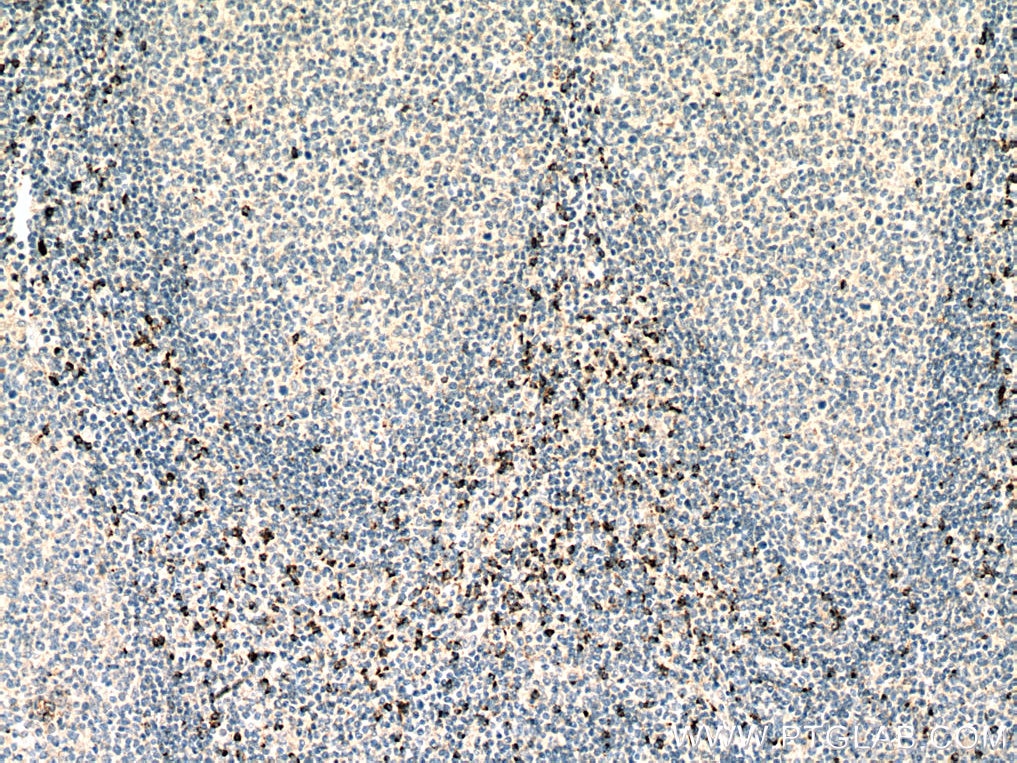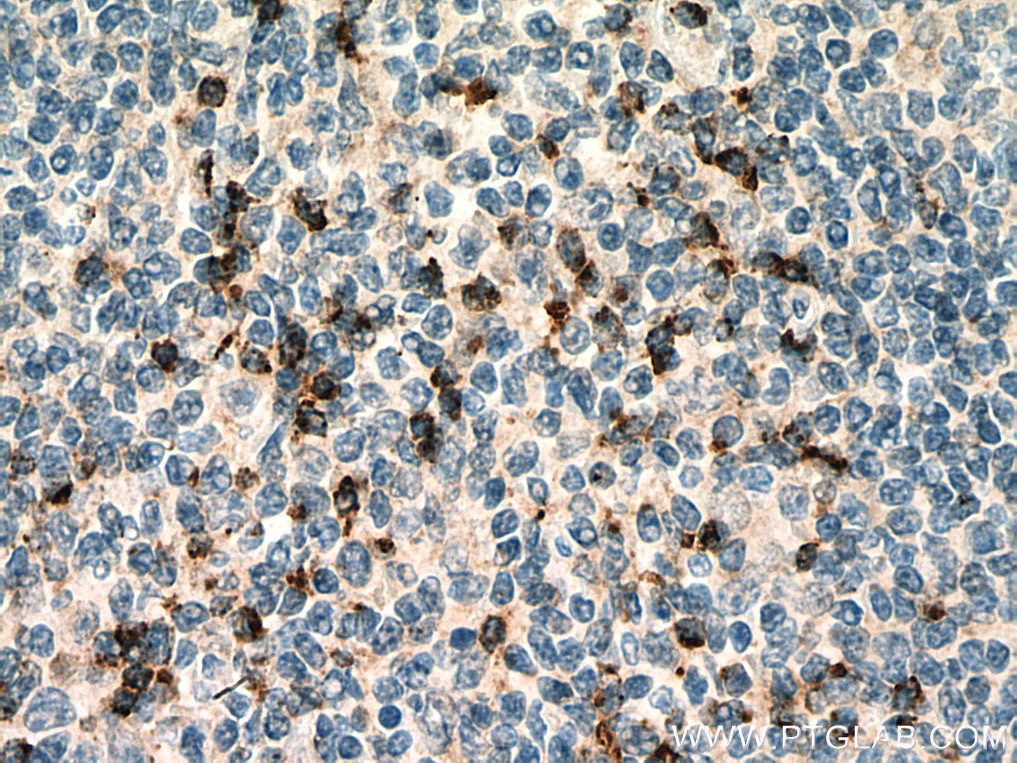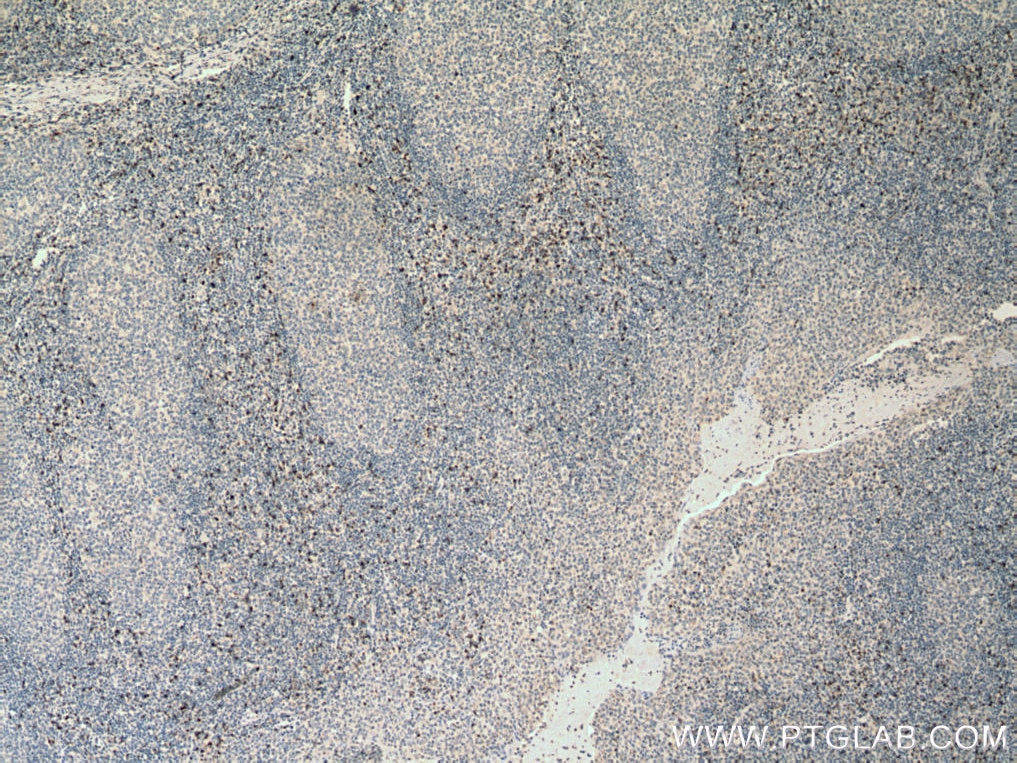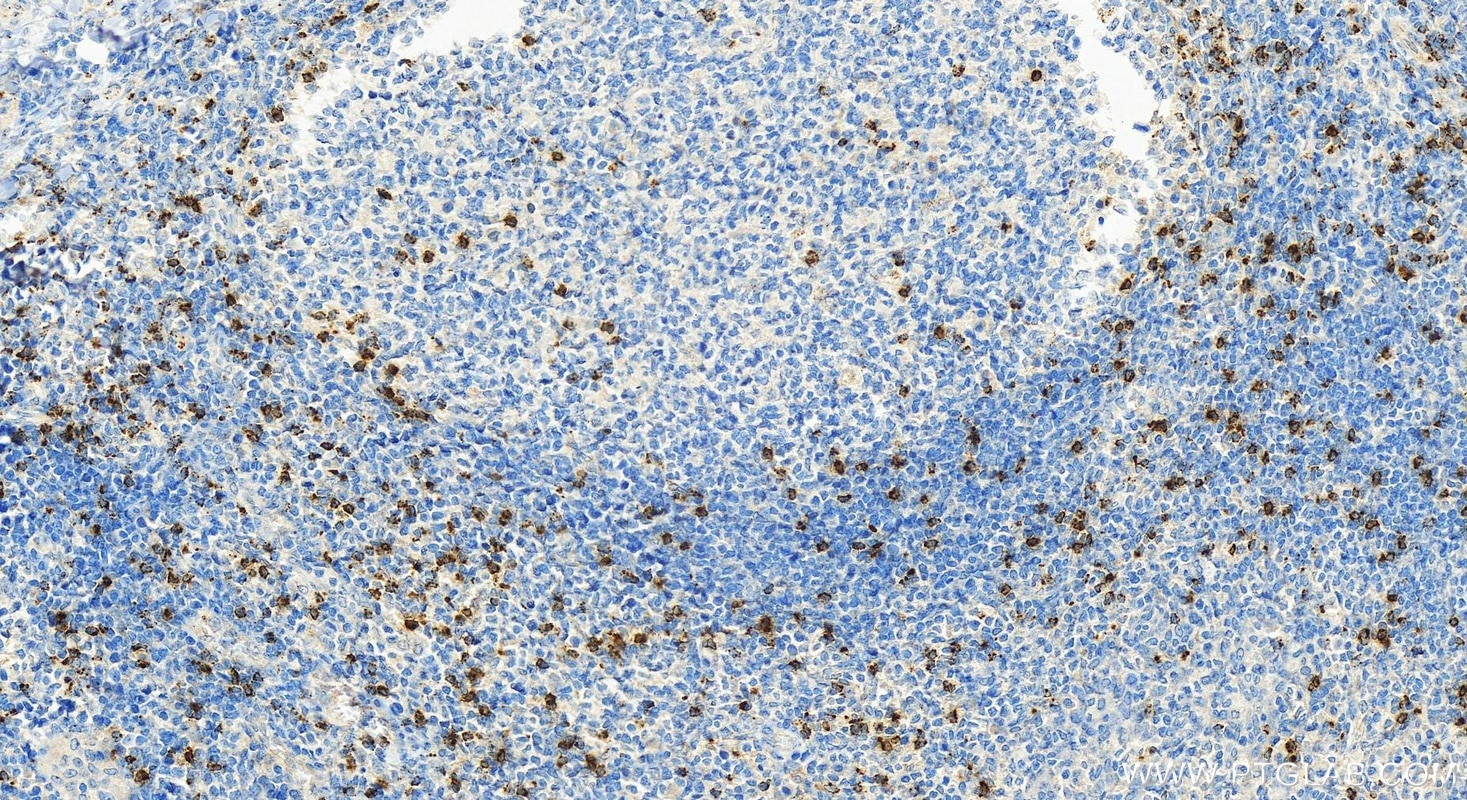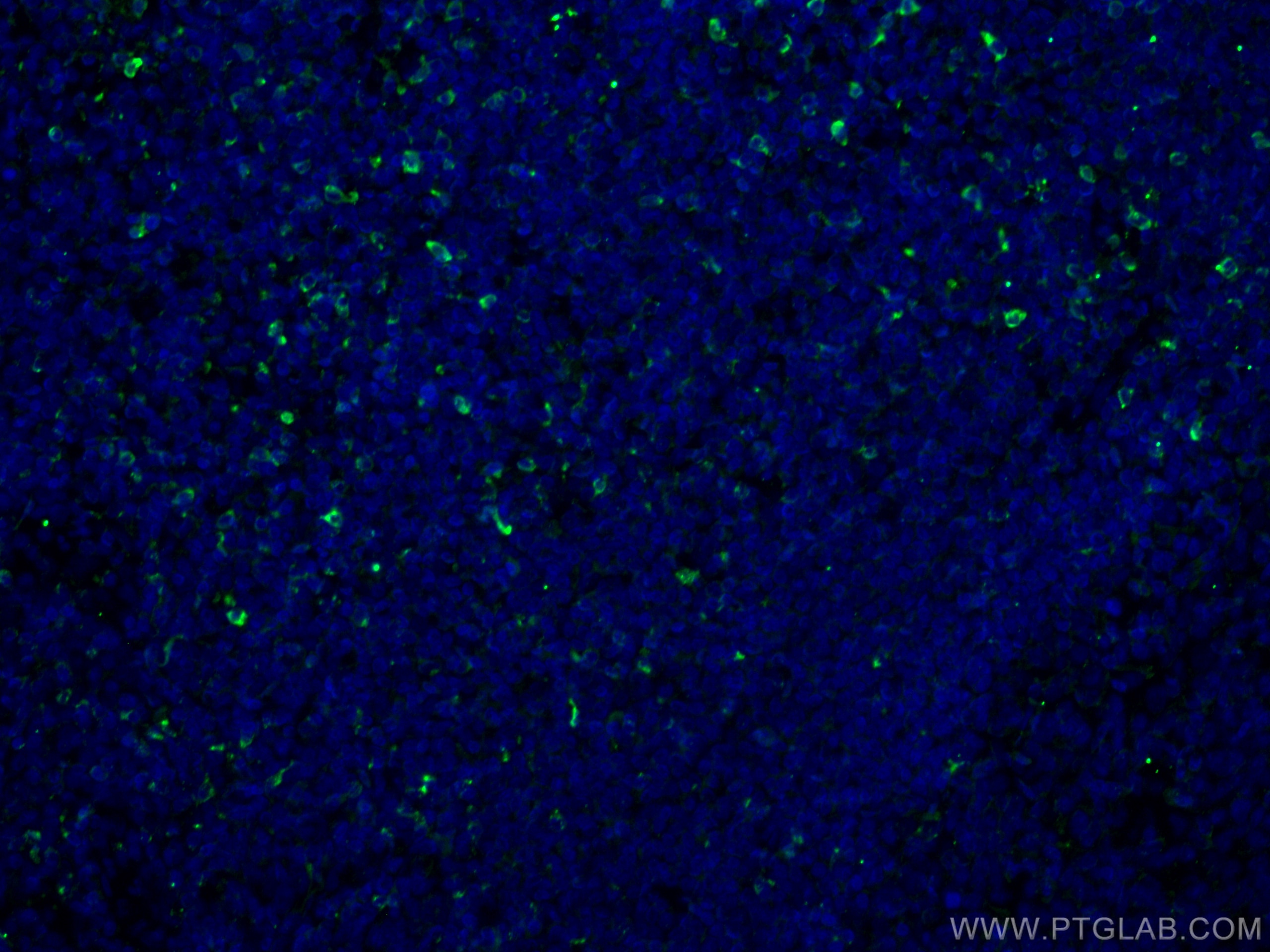Granzyme K Monoklonaler Antikörper
Granzyme K Monoklonal Antikörper für IHC, IF-P, ELISA
Wirt / Isotyp
Maus / IgG2b
Getestete Reaktivität
human und mehr (1)
Anwendung
IHC, IF-P, ELISA
Konjugation
Unkonjugiert
CloneNo.
1C3A4
Kat-Nr. : 67272-1-Ig
Synonyme
Geprüfte Anwendungen
| Erfolgreiche Detektion in IHC | humanes Tonsillitisgewebe Hinweis: Antigendemaskierung mit TE-Puffer pH 9,0 empfohlen. (*) Wahlweise kann die Antigendemaskierung auch mit Citratpuffer pH 6,0 erfolgen. |
| Erfolgreiche Detektion in IF-P | humanes Tonsillitisgewebe |
Empfohlene Verdünnung
| Anwendung | Verdünnung |
|---|---|
| Immunhistochemie (IHC) | IHC : 1:500-1:2000 |
| Immunfluoreszenz (IF)-P | IF-P : 1:200-1:800 |
| It is recommended that this reagent should be titrated in each testing system to obtain optimal results. | |
| Sample-dependent, check data in validation data gallery | |
Veröffentlichte Anwendungen
| IHC | See 2 publications below |
| IF | See 4 publications below |
Produktinformation
67272-1-Ig bindet in IHC, IF-P, ELISA Granzyme K und zeigt Reaktivität mit human
| Getestete Reaktivität | human |
| In Publikationen genannte Reaktivität | human, Maus |
| Wirt / Isotyp | Maus / IgG2b |
| Klonalität | Monoklonal |
| Typ | Antikörper |
| Immunogen | Granzyme K fusion protein Ag27297 |
| Vollständiger Name | granzyme K (granzyme 3; NK tryptase II) |
| Berechnetes Molekulargewicht | 29 kDa |
| GenBank-Zugangsnummer | BC035802 |
| Gene symbol | GZMK |
| Gene ID (NCBI) | 3003 |
| Konjugation | Unkonjugiert |
| Form | Liquid |
| Reinigungsmethode | Protein-A-Reinigung |
| Lagerungspuffer | PBS with 0.02% sodium azide and 50% glycerol |
| Lagerungsbedingungen | Bei -20°C lagern. Nach dem Versand ein Jahr lang stabil Aliquotieren ist bei -20oC Lagerung nicht notwendig. 20ul Größen enthalten 0,1% BSA. |
Hintergrundinformationen
Granzymes are a family of serine proteases stored in granules inside cytotoxic cells of the immune system. There are five human granzymes (granzyme A (GrA), GrB, GrH, GrK and GrM) currently identified, whereas mice have ten known granzymes (GrA-G, GrK, GrM and GrN) (PMID:14499263). Human GrK was first discovered in 1988 after purification from human peripheral blood mononuclear cells. GrK is expressed by cytotoxic T lymphocytes, natural killer T cells (NKT), γδ T cells and CD56bright+ NK cells.
Protokolle
| PRODUKTSPEZIFISCHE PROTOKOLLE | |
|---|---|
| IHC protocol for Granzyme K antibody 67272-1-Ig | Protokoll herunterladenl |
| IF protocol for Granzyme K antibody 67272-1-Ig | Protokoll herunterladen |
| STANDARD-PROTOKOLLE | |
|---|---|
| Klicken Sie hier, um unsere Standardprotokolle anzuzeigen |
Publikationen
| Species | Application | Title |
|---|---|---|
Biomedicines Identification and Preliminary Clinical Validation of Key Extracellular Proteins as the Potential Biomarkers in Hashimoto's Thyroiditis by Comprehensive Analysis | ||
J Inflamm Res Single-Cell Analysis Identifies Distinct Populations of Cytotoxic CD4+ T Cells Linked to the Therapeutic Efficacy of Immune Checkpoint Inhibitors in Metastatic Renal Cell Carcinoma | ||
Nat Commun Molecular and spatial analysis of tertiary lymphoid structures in Sjogren's syndrome | ||
Cancer Lett A single-cell map of patients with non-small cell lung cancer harboring rare-driver mutations after anti-PD-1 treatment | ||
Neuron Clonally expanded, targetable, natural killer-like NKG7 T cells seed the aged spinal cord to disrupt myeloid-dependent wound healing | ||
Adv Sci (Weinh) Behind the Indolent Facade: Uncovering the Molecular Features and Malignancy Potential in Lung Minimally Invasive Adenocarcinoma by Single-Cell Transcriptomics |
